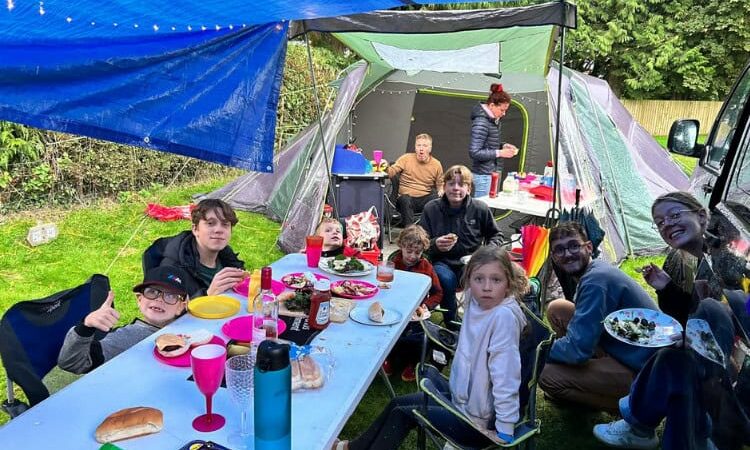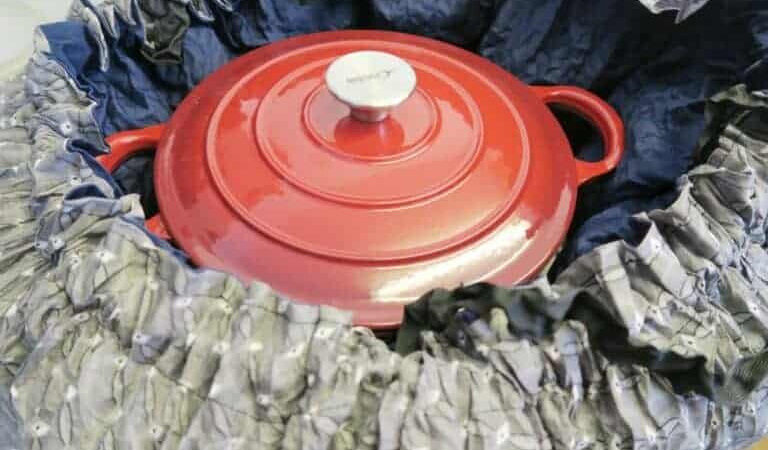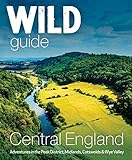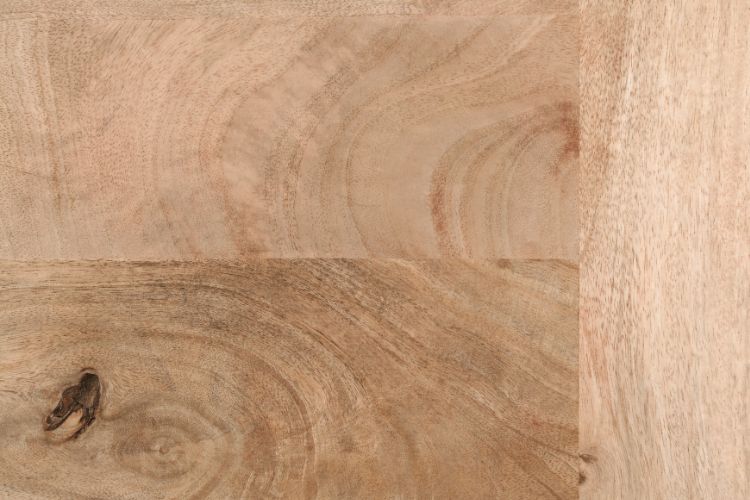How To Make Homemade Fat Balls For Birds (And What Attracts Certain Birds)
The UK is home to more than 600 species of birds and many of these can be seen in your garden. However, if you want to attract them to your backyard, you need to provide a safe and welcoming environment. Part of that means putting out food.
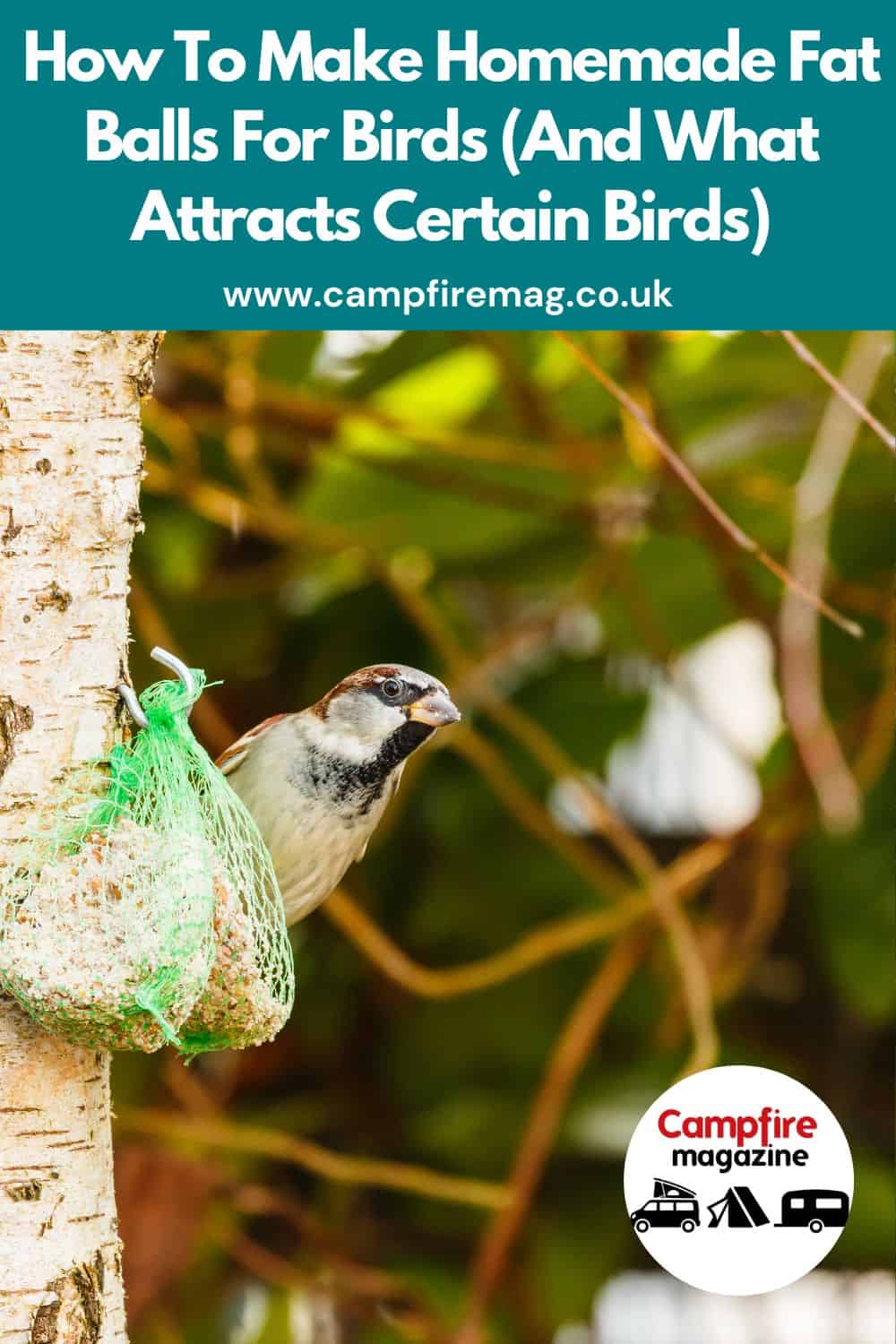
Fat balls provide birds with energy and nutrition and are a brilliant supplement to their diet. Different birds will be attracted to different ingredients but there are some things you should avoid. The last thing we want is to harm our feathered friends when we’re actually trying to help them.
In this guide, we’ll discuss the do’s and don’ts of how to make homemade fat balls for birds and tell you the best ingredients to use.
What Types Of Birds Will Eat Fat Balls?
It’s important to remember that not all birds will want to eat your homemade fat balls as different species have differing diets. For example, some birds prefer to eat insects from the ground whereas others will go crazy for fat balls.
In the UK, some of the most common species you’ll attract by putting out fat balls include the great tit, blue tit, robin, long tailed tit and the dunnock. You may also see things like magpies, jays and jackdaws and if you’re really lucky, there may even be a woodpecker or two!
What Foods Attract Certain Birds?
As we have mentioned, there are a whole host of bird species in the UK and you might be looking to attract certain ones. Of course, you’ll need to make sure that they are normally found in your local area but once you know what’s nearby, you can use the following foods to attract certain birds.
-
Berries are ideal for attracting robins, thrushes and sparrows
-
Smaller seeds are perfect for birds like dunnocks, tits and finches.
-
Pigeons and doves love grains like wheat and barley.
-
Nyjer seeds are excellent for attracting house sparrows and goldfinches.
-
Wrens, robins, dunnocks and coal tits are partial to peanuts although these must be unsalted.
-
When there is a lack of insects, it is possible to put out dog food for birds like the blackbird. However, we wouldn’t recommend including this in a fat ball.
How To Make Fat Balls For Birds
If you’re eager to attract some beautiful feathered friends to your garden then fat balls are a great way of doing this. You must make sure to offer these at the right time of year but we will go into more detail on this later on. For now, let’s take a look at how to make fat balls for birds.
Ingredients
There are a lot of things you could add to your fat balls for birds and as we have already seen, different foods will attract different birds. Here are some of the things you might include.
Fat
It goes without saying that you’ll need to include fat in your fat balls. This can be either suet or lard, depending on what you have available. The most important thing is to get the ratio correct. You’ll want to use one part fat for every two parts other ingredients as this will allow the ball to set properly.
Seeds
Seed is an excellent food for birds and a staple part of their diet. You’ll be able to purchase packets of wild bird seeds from almost anywhere. It’ll be in your local supermarket, garden centres and you can even order it online.
Nuts
Now, you don’t have to add nuts to your fat balls as this isn’t considered to be one of the most important ingredients but it can mix up what birds will come and feed. You can use all kinds of nuts but make sure to check that they’re unsalted; things like peanuts often are and this isn’t good for the birds.
Fruit
A lot of birds are attracted to fruits but it’s best to use dried fruit as opposed to fresh as this will go off more quickly. Things like dried dates or raisins are a brilliant option.
Using a Container
There are two methods you might use to make a fat ball for birds. The first being using a container. It’s incredibly simple and involves a few easy steps.
-
Start by melting your chosen fat either in the microwave or over a low heat on the stove.
-
Once melted, add in the dry ingredients.
-
Make sure you mix well so that all of the dry ingredients are evenly coated.
-
Now transfer the mix into your container and allow it to set in the fridge overnight.
Choosing The Right Container
If you’re going for the container method then one of the most important things is to choose the right container. Your options are pretty open but these are some of the ones we would consider to be best.
-
Yoghurt pots: these are widely available and reusing them for fat balls is a great way to avoid waste. You’ll need to thoroughly clean the pots before use and then make a small hole in the base, through which you can tie a string to hang them. Make sure that the string is in the mixture as you pour it so that when it is set you can remove the pot and hang the fat ball easily.
-
Coconut shells: a lot of people opt for coconut shells but you will need a drill to make the hole for the string. You’ll get more than one use out of this natural container and they look very aesthetically pleasing in the garden.
-
Plant saucers: this is a very simple and easy option as you can just pour in the mixture and set the tray down outside.
-
Margarine tubs: you can use these in a very similar manner to coconut shells but the only downside is they aren’t as decorative.
Of course, if you’re happy to get your hands dirty, you can simply mould the mixture by hand. This might be a fun option if you’re making fat balls with your children as they’re always happy to get stuck in; the messier, the better!
Using A Pine Cone
Another common method for making fat balls is to use pine cones to hold the mixture. Not only is this a natural method but it also makes the fat balls blend into the garden a lot more easily.
-
Take some lard and allow it to come to room temperature.
-
Make sure your pine cones are clean and free from debris.
-
Tie a long piece of string or twine around the base of each cone.
-
Mix the lard with your seed and other ingredients so that everything is stuck together.
-
Take the mixture and push it into the gaps of the pine cone.
-
Put the cones into the fridge until they go hard.
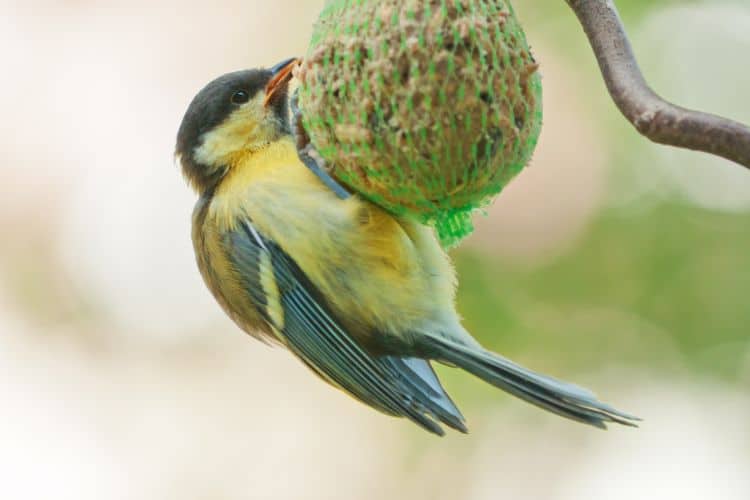
Foods You Should Avoid When Making Fat Balls
While there are a lot of things that you can include in your homemade fat balls, there are some ingredients that aren’t suitable for birds.
-
Cooked oats: once you cook oats, they become very glutinour and this can pose a danger to birds. The reason for this is that the mixture can form a paste around the beak making it difficult, or even impossible for the bird to eat. However, you can use uncooked oats.
-
Bacon fat or other fats from cooked meats: in days gone by, people would save their cooked meat fats for the birds but we know now that this isn’t a good option. You see these fats are incredibly greasy and if this gets on the feathers, it can affect their natural waterproof layer as well as making them less insulating.
-
Bread: how often have you thrown bread out into the garden for the birds? We’ve all been guilty of it in the past but we now understand that it’s really quite pointless. This is because bread fills the bird up but contains no real nutritional value for it.
When Should You Use Fat Balls?
You should use fat balls as a supplement to the bird’s natural diet. In winter, there is less natural food around for our feathered friends so using fat balls is a great idea. It will allow the birds to make it through the colder months without losing their fat reserves. For some birds, like robins, this can happen so quickly and is almost always fatal.
However, we wouldn’t recommend using fat balls in the summer as it takes very little time for them to become rancid due to the heat. There are lots of other things you can offer the birds in summer but fat balls shouldn’t be one of them.
Tips For Success
Now that you know exactly what to use to make your bird feeder fat ball, you’ll want to have the best success. Here are some quick tips.
-
It can be easier to mix the fat with the dried ingredients if you chop everything up into small pieces.
-
Using pine cones means that you have a reusable feeder. You can keep using them until they’re no good. However, it is essential to clean them between uses to avoid the spread of diseases.
-
If you want to make fat balls in batches then you can store them in the freezer. Just make sure to wrap them in cling film or a plastic bag first.
-
When choosing a location for the fat balls, think wisely. Place them away from anywhere that there may be predators but ensure that there is good tree cover nearby.
-
Sometimes, you may find that the location isn’t good for birds and none will come. Keep an eye on things and if no birds come to feed, try moving the fat ball.
-
Be consistent if you want to attract birds. The more often food is available in your garden, the more chance there will be that birds will return.
Conclusion
Fat balls are an excellent source of nutrition for birds, especially during the colder months when natural food sources are scarce. They’re easy to make and you can include different ingredients depending on the species you’re looking to attract.
Source: https://campfiremag.co.uk/homemade-fat-balls-for-birds/



